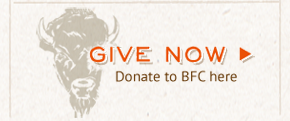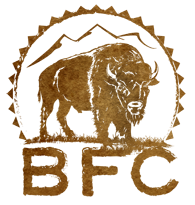Greetings Buffalo Community,
My name is Ei’se Hough’ne (Sun Wolf), and I am a United States citizen that is from the Suh’tai band of the “Tsistsistas” Nation (Cheyenne); the Oglala Lakota Oyate of the “Oceti Sakowin” Nation (Sioux); the Pine Martin Clan of the “Anishinaabe” Nation (Chippewa); and the “Tewa” of the Anasazi Peoples (Pueblo). My prisoner of war surname is “Carlisle;” and my U.S. citizen/Christian name is W. Patrick Kincaid. I served in the United States Marine Corp from 1987-1991 and was decorated in the Persian Gulf War as a motorcycle courier with the 24th Marines assigned to the 1st Marine Corp Expeditionary Force.

In 2000, I served as the Chairman of the Board of Director’s Wetland Preservation Organization (WPO), which was a 501 (c)(3) located in Lawrence, KS and that had a mission to stop a 10-lane trafficway from being built thru an unmarked burial site protecting approximately 700 missing and/or murdered American Indian students from further subjugation. That same year I was working with Kansas University’s Department of Evolutionary Biology and Ecology on a tall grass prairie restoration project; and in 2001, I published the research in a peer-reviewed scientific journal article as lead author.
However, my scientific career ended with the publication of that paper, as it had become apparent to me, while participating in the NEPA scoping processes on behalf of the WPO, that the individuals on these colonial committees were not really concerned about ethical issues backed by science but rather focused on their own individual liabilities. At that point, I decided to become an Indian law attorney.
However, I did stay involved in Sacred Site/Water Protection at the grass-roots level; and eventually, I earned a J.D. with an Indian law certificate from the Sandra Day O’Connor College of Law at Arizona State University (ASU), in 2012 and 2014, respectively. During this time, I co-founded the Student Alliance for Appropriate Representation in Durango, CO and the Fort Lewis Buffalo Council, as well as founding the ASU Native American Law Student Association Pro Bono Committee. These organizations promoted the diversity and well-being of college student bodies, food sovereignty, water protection, Indian education, and the protection of Indigenous Treaty Rights for Tribal Nations.
In 2016, I represented the Standing Rock Sioux Tribe and the Yankton Sioux Tribe as their Treaty attorney and consultant during the Dakota Access Pipeline conflict; and in 2018, I co-managed the 150th Fort Laramie Treaty gathering of treaty nations, and later provided representation for the Rosebud Sioux Tribe on multiple treaty matters. In 2020, the Supreme Court of the United States held that Oklahoma’s reservations were intact, in McGirt vs Oklahoma, which was the result of a legal work product that I co-created to preserve Indian Country jurisdictions using aspects of federal colonial Indian law that, up to that time, never been asserted.
I have recently been retained by Buffalo Field Campaign (BFC) to help accomplish their mission by empowering and enabling the Tribes efforts to re-introduce the Buffalo herds back into the North American ecology. While this is a very ambitious objective, because of the multiple jurisdictions involved and the strong stance of a small portion of the private property culture opposed to Buffalo eating grass allocated to livestock, I’m confident that the Tribal Nations and the platform that BFC is presently in the process of providing will achieve the success that we all desire.
That is, full scale Buffalo reintroduction!
With multiple jurisdictions come multiple cultures interacting, as well as multiple sub-cultures converging. Again, the one area of consensus that everyone wants is full-scale reintroduction. However, there is potential for disagreement concerning the step-by-step roadmap to achieving this full-scale reintroduction.
For example, the State of Montana’s livestock agency has successfully diverted the blame for their extermination agenda to the Tribal hunters who have become the perceived enemy of the Buffalo herds, though it is the State’s unwillingness to let Buffalo inhabit their historic, natural range in the Greater Yellowstone Ecosystem that is truly blameworthy. To any by-stander who is watching the Tribal hunter citizens exercising their treaty rights, it could be perceived that the Tribal hunt is no different than the slaughter that occurred by the U.S. government and railroad barons of the late 1800’s. However, Tribal Nations are no more the enemy of the Buffalo herds than the wolf packs or the grizzly bear families are an enemy, and soon it will become clear to all that this right to hunt, preserved by treaty, will be the main reason that our children will see thundering wild Buffalo ranging across the country once again.
However, until then there are many who simply want Tribal hunts to end, reasoning that they only want the Buffalo to be treated respectfully and humanely. But this is exactly why the focus should be on the State of Montana’s livestock agency, and not the sacred relationship of Tribes and Buffalo, because the most humane thing we can do for Buffalo is not end their aboriginal predator-prey relationships, but to overcome any and all obstacles to a full-on restoration of Buffalo to the ecology. Humans have always been food cultures. Some may even argue that we are a fast-food culture today — and Indians are, too. Regardless, there is also a historical understanding today that the Plains Peoples, indigenous to North America, were always a Buffalo culture whose rights were preserved by Treaties - Treaties preserved under Article 6 of the U.S. Constitution and binding upon all U.S. officials, as well as preserved under the Sacred Pipes of the Indigenous Families reminding us of who we are.
Therefore, I argue to those who remain opposed to Tribal hunting while supporting Buffalo re-introduction that you may be “unknowingly” supporting the ethnic genocide of our Indigenous cultures, who are also U.S. citizens. The American Bar Association defines “ethnocide” (syn.) as "the destruction of culture while keeping the people.” In other words, failing to include the Tribe’s connection to their aboriginal food source and focal point of our culture as part of any sustainable re-introduction effort reflects colonialist attitudes that promote ethnic genocide, regardless of intent. It’s also short-sighted.
With that being said, I would like to share a story thru a Cheyenne cultural lens about my own personal experience with the Buffalo, in the spirit of unifying those who are opposed to the hunting rights of Indigenous Peoples with those of us who support Treaty hunting. I have personally witnessed the medicine provided by the Buffalo, as it is a sacrament of my community and family. We often say, to remind ourselves before a Buffalo harvest, “one dies so many can live,” as we pray to the Buffalo spirit and give thanks for the Buffalo’s offering of food and medicine that our family may lack and need. So these takings are never taken lightly. That’s the meaning of “honorable harvest,” as opposed to some Western trophy-hunting notion of “fair chase.” The happiness the Buffalo provides the most oppressed and impoverished U.S. citizens can not be comprehended, but only experienced.
While there is so much to say here, the important thing is that we all remember that we’re on the same side. We all want Buffalo back on the land across Turtle Island (North America) - so why not also bring humans back into the Ecology?
I have harvested 14 Buffalo in my lifetime, and I can remember each one of them, because these were sacred moments in my life. Of these 14 harvests, I have been the shooter of the Buffalo 5 times. I did not choose to be the shooter but was asked by my community, which was benefiting from the Buffalo medicine, to accept the responsibility that comes with taking the life of a Buffalo.
Each time a Buffalo kill is made in my community, everyone present mourns for the Buffalo’s spirit. As those harvesting the Buffalo began the process, the empathy turns to joy because children begin to walk up and touch the Buffalo medicine, elders re-establish their roles of teaching our youth, and the youth listen eagerly. Adults who normally avoid each other begin talking and healing, hundreds of individuals will be fed, pride is restored in the community, our culture is embraced, ceremonial practitioners are given sacred objects that were once unavailable, and so on. Those participating in the Buffalo harvest are bonded forever with each other and with the Buffalo.
As I said before, each harvest I experienced has had its own purpose and necessity. The last harvest I participated in was the Summer of 2021. An Oglala medicine man asked me to harvest a Buffalo out of the Tribal Nation’s herd, located on the Pine Ridge reservation in South Dakota. As an executive who serves this holy man in several capacities, I was told this Buffalo would be part of the annual Sundance he oversees, and so I brought the Buffalo medicine back to him after the harvest.
Before the shooting of the Buffalo, who was offering himself, was about to happen, my brothers sang songs to honor this individual Buffalo along with his herd family who would mourn his death. We prayed to the Creator for the honor of being part of the Ecology. I smudged with sage and talked to the Buffalo about helping our families and giving thanks to him. After the shot was made, I gave the Buffalo his last drink of water and suggested to him that in the next life I would offer myself to his family and that he should take me for that purpose at that time.
Eventually the Sundance ceremony began, and I was asked to take two elders to the center of the ceremony where the “Tree of Life” was being placed for four days of prayers. On my left arm I escorted a Peace Chief from the Southern Cheyenne Nation’s Council of 44 Chiefs, and on my right arm was a Lakota elder, the grand-daughter of Chief Red Cloud who signed the 1868 Treaty on behalf of the Great Sioux Nation.
As we walked up to the “Tree of Life,” I looked into the hole in which the Tree was being placed. In it was the heart of the Buffalo that I’d harvested. The elders I was asked to escort said their prayers, and the Tree was placed in the center of the “Circle of Life.” Later that evening, I couldn’t help but think while we were eating the stew that the Buffalo provided us that we are still here! We refuse to be the victims of colonial genocide, and we continue to pray for World Peace for Peoples, globally.
I believe that the animal rights solution is the same solution as the human rights solution; and that solution is full scale re-introduction of Buffalo in the North American ecology. Lets unify against the State(s) promoting cultural genocide by preventing Buffalo from roaming free.
I look forward to serving the supporters of the Buffalo Field Campaign and the Buffalo Nation.
~ Pat Kincaid







